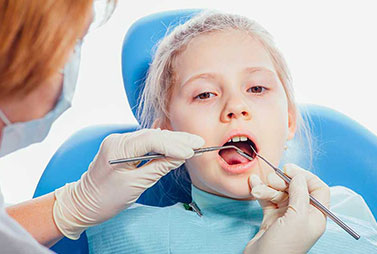
What to Expect in Exfoliation of Baby Teeth
Baby teeth, milk teeth, temporary teeth, deciduous teeth – whatever we call them – are the first set of 20 teeth to appear in babies and younger children. Although these are developed during pregnancy, specifically the embryonic phase, they do not appear until the child is 6 months of age. Note that this schedule is not set in stone and may vary. Age of eruption of these teeth is independent of the child’s health condition, weight, height etc so it is not something to worry about.
A tooth erupts simply because it is ready to come in. Unfortunately, the same cannot be said about premature loss of baby teeth. They can be lost early due to accidents, but also due to poor oral hygiene or a sugar-laden diet that may lead to bacterial infections and other problems.
Many parents do not put much emphasis on taking care of baby teeth since “they will fall out anyway”. However, baby teeth are important in the development of permanent teeth. For one, baby teeth provide the space needed for the eruption of permanent teeth. Some of the baby teeth are not scheduled to be lost until twelve years of age. If they are lost early, it could lead to a need for spacers, braces or retainers to fix spacing problems. Also, a child’s speech may be affected from premature teeth loss. Pain and infection that results from decayed baby teeth can cause loss of school time and work time for parents, antibiotic and pain killer treatments as well as hospitalizations. Lastly, baby teeth are essential for proper chewing of food.
With proper care, baby teeth are expected to start falling out at age six and continue until the last baby tooth exfoliates at age twelve. This however is “average” timing and varies from child to child. Generally, when baby teeth come in early, they fall out early too. Boys are also said to keep their baby teeth longer than girls.
The first teeth to fall out are usually the ones that appeared first. The two lower central incisors or cutters are the first ones to erupt at 6 or 7 months of age and these are also the first ones to fall out around six years of age. These are most likely followed by the upper central incisors and side (lateral) incisors. Our website offers a tooth eruption chart that details this timing.
When baby teeth wiggle out or fall out, some kids are nervous while others are thrilled. Some feel both. Parents play an important role in this scenario. They need to reassure the little ones that this process in natural. This is also the time to stress the importance of oral hygiene in preparation for permanent teeth. Encourage them to brush at least twice a day and floss before bedtime. Offer help if needed.
Changes in the diet should also be implemented, particularly if the child’s diet is composed of sugary and starchy foods. If the child is used to drinking sodas and juices, try to make him or her drink water instead. For a little flavor, put a slice of lemon or a fresh herb like rosemary or mint in the water.
Lastly, bring your child to a pediatric dentist. While a general dentist may provide proper care, a pediatric dentist is especially trained to handle children and understands the eruption process. Dentists do not usually need to pull out a wiggly primary tooth since it comes out naturally, but in some cases primary teeth do need assistance in exfoliation. In addition a pediatric dentist can help in applying sealants and fluoride treatments to avoid decay while the permanent tooth is on its way. This is also the time when orthodontic referrals might be crucial and your pediatric dentist will know exactly when such action is needed.




